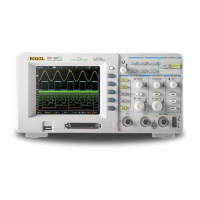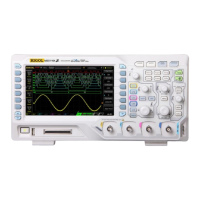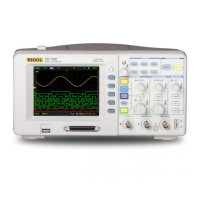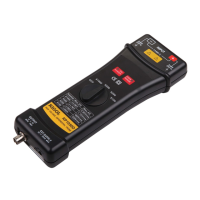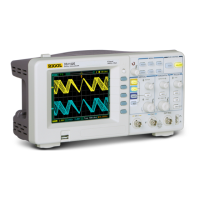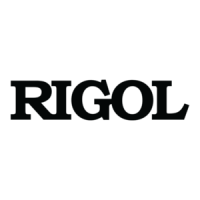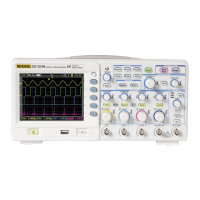RIGOL
2-46 Copyright ©1998-2008 RIGOL Technologies, Inc.
User’s Guide for DS1000CA Series
Trigger Key points
1. Trigger Source:
Trigger occurs from several sources: Input channels (CH1 and CH2), AC Line, Ext,
Ext/5.
z CH1 or CH2:
It is the most commonly used trigger source. The channel works when selected
as a trigger source whatever displayed.
z Ext Trig:
The instrument can be triggered from a third source while acquiring data from
CH1 and CH2. For example, to trigger from an external clock or with a signal
from another part of the test circuit. The Ext, Ext/5 trigger sources use an
external trigger signal connected to the EXT TRIG connector. Ext uses the signal
directly; it has a trigger level range of +1.6 V to -1.6 V. The EXT/5 trigger source
attenuates the signal by 5X, which extends the trigger level range to +8 V to -8
V allowing the oscilloscope to trigger on a larger signal.
z AC Line:
AC power can be used to display signals related to the power line frequency,
such as lighting equipment and power supply devices. The oscilloscope gets
triggered on its AC power input, an AC trigger signal is not required. When AC
Line is selected as trigger source, the oscilloscope automatically set coupling to
DC, set trigger level to 0V.
2. Sweep Mode:
The sweep mode determines how the oscilloscope behaves in the absence of a
trigger event. The oscilloscope provides three trigger modes: Auto, Normal, and
Single.
z Auto:
This sweep mode allows the oscilloscope to acquire waveforms even when it
does not detect a trigger condition. If no trigger condition occurs while the
oscilloscope is waiting for a specific period (as determined by the time-base
setting), it will force itself to trigger.
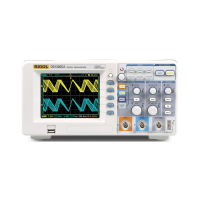
